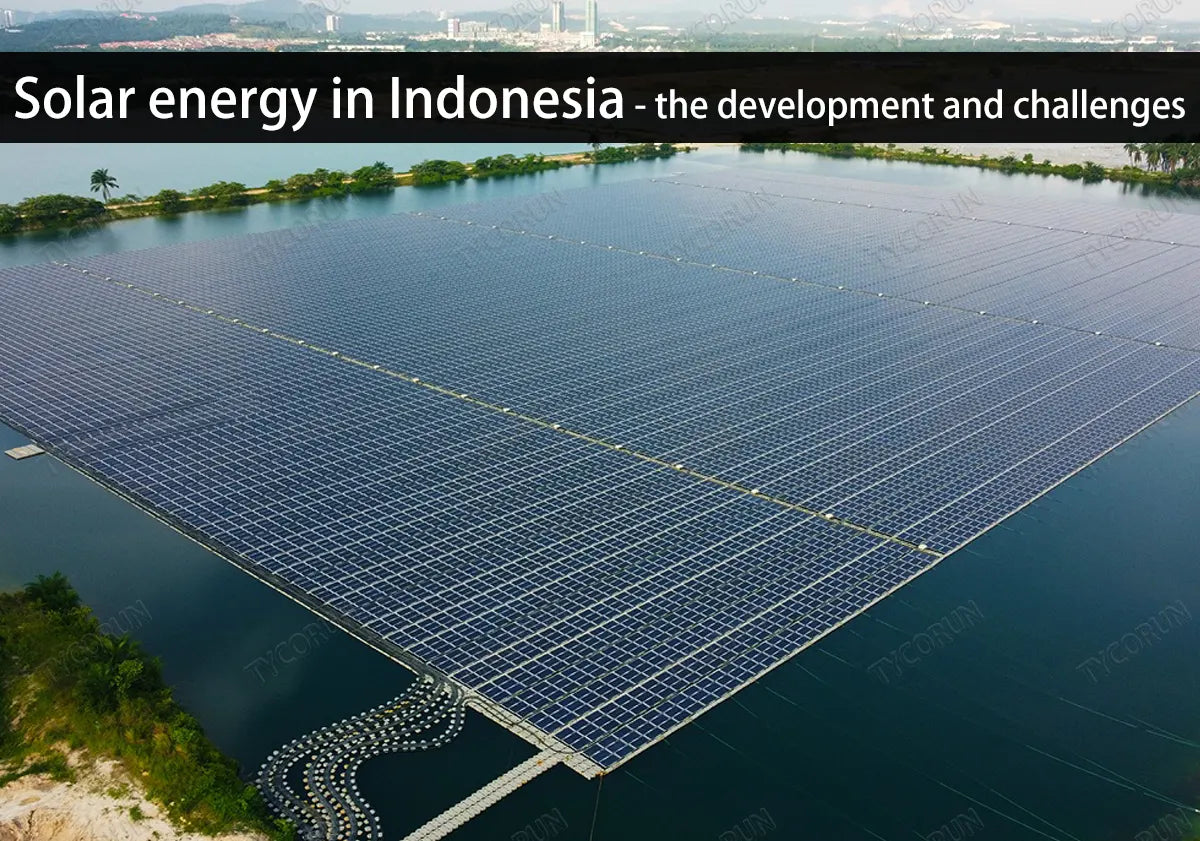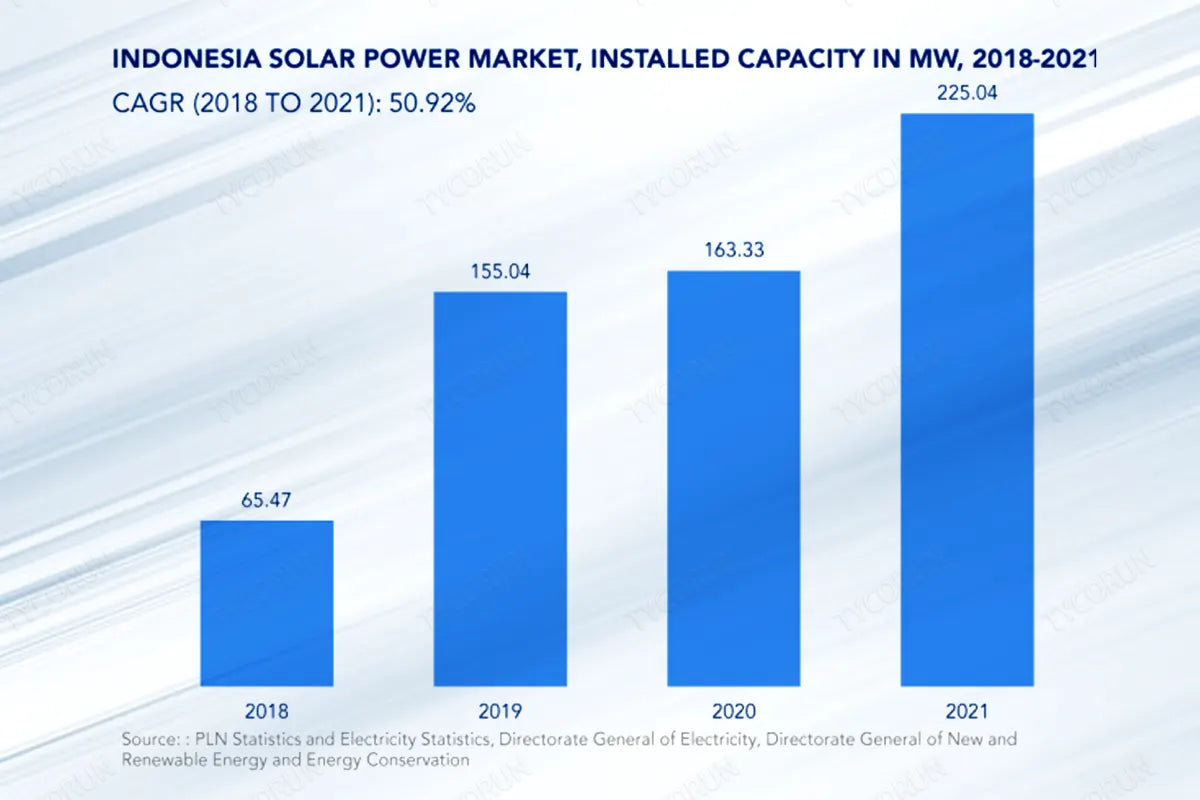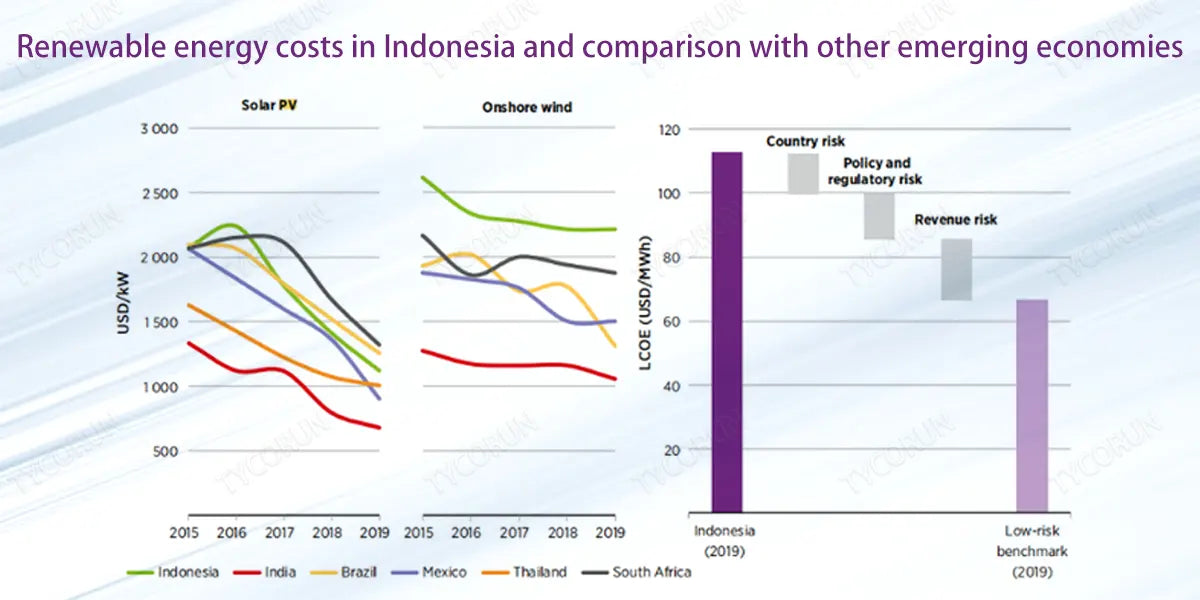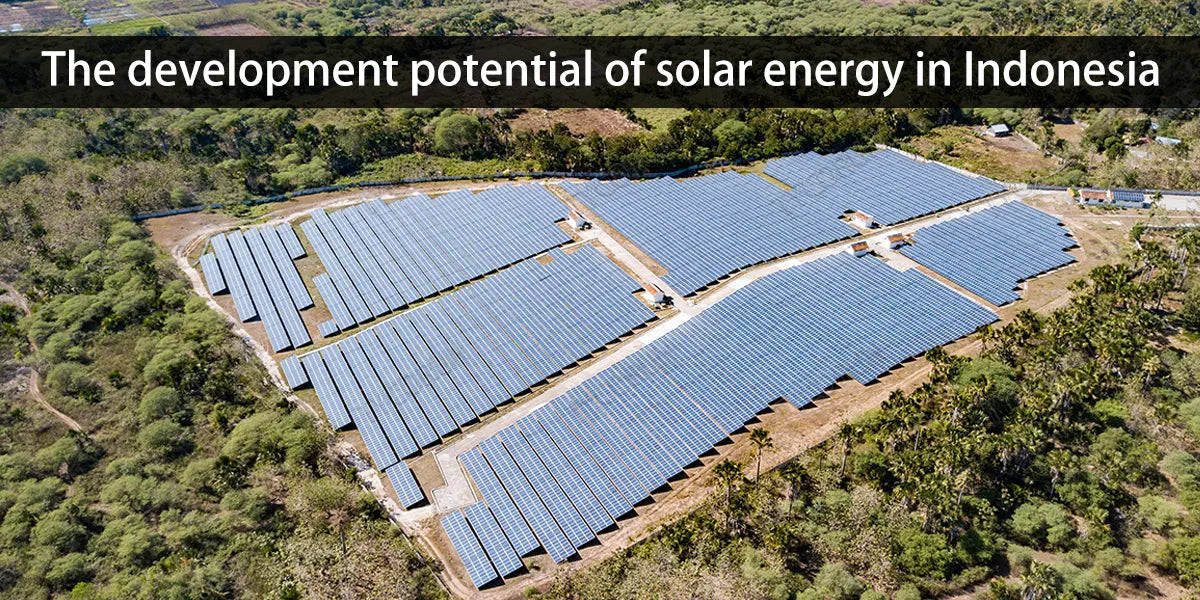
Indonesia is the largest economy in Southeast Asia and the fourth most populous country in the world, with a population of more than 270 million. In recent years, Indonesia's electricity demand has continued to rise with economic and population growth. It is expected that Indonesia's electricity demand will more than triple by 2040.
However, Indonesia's power supply faces many challenges, such as insufficient grid coverage, high power losses, and serious pollution from coal-fired power plants. In order to solve these problems, the Indonesian government has formulated a series of policies and plans aimed at promoting the development of renewable energy such as solar energy in Indonesia and increasing the utilization rate.
This article will introduce you to the development status and challenges of solar energy in Indonesia.
Main content:
1. Current status of Indonesian photovoltaic industry
According to the Indonesian Ministry of Energy and Mineral Resources, Indonesia’s renewable energy potential is very large and is estimated to be 417.8GW in total. Among them, the potential of solar energy in Indonesia is high as 207.8GW, accounting for more than half of the total potential.
However, as of 2021, Indonesia's installed solar power generation capacity was only 225MW, which means that there were still a large number of solar resources that have not yet been developed and utilized.
Data shows that Indonesia has great development potential in the field of renewable energy, especially in the field of solar energy. In order to make full use of these resources, a series of measures need to be taken to promote the development of solar energy in Indonesia, which includes increased investment in photovoltaics, improvements and expansion of grid infrastructure, and more supportive policy and regulatory frameworks.

As of the second half of 2021, there were grid-connected, under-construction and reserve photovoltaic grid-connected projects across Indonesia, including the 145MW Cirata floating photovoltaic project, the 150MW Likupang photovoltaic project, and the 100MW Tolo wind-solar hybrid project.
Most of them are small municipal power station demonstration projects in remote areas. The government and relevant departments also need to formulate a more favorable policy and regulatory framework to attract more investment and promote the development of the solar industry.

2. The development potential of solar energy in Indonesia
As an archipelagic country, Indonesia has vast solar resources. According to the International Renewable Energy Agency, Indonesia’s solar radiation is quite high, with an average of 1,600-2,300kWh of solar radiation received per square meter per year, which is equivalent to generating approximately 200GW of solar electricity per year. This unique resource condition provides huge potential for utilizing solar energy in Indonesia.
Indonesia also has another unique advantage, which is floating photovoltaic (FPV). It provides Indonesia with a unique opportunity to exploit its abundant water resources. Compared with land-based photovoltaics, floating photovoltaics are built on the water and do not need to occupy land resources, so they can effectively solve the problem of limited land resources.

In addition, floating photovoltaic panels operate at lower temperatures due to the cooling effect of water, which improves power generation efficiency and extends the life of the components. Indonesia has 100 reservoirs and 521 natural lakes, and these waters can be considered for the construction of floating photovoltaic projects in the future. Currently, Indonesia is building the largest floating photovoltaic project in Southeast Asia - the Cirata Reservoir 145 MW floating photovoltaic project.
The project is jointly developed by Abu Dhabi's Masdar Company and PT PJBI, a subsidiary of Indonesia's national power company PT PLN. PowerChina International Group (Huadong Engineering Corporation Limited as the implementation entity) is responsible for the project EPC.
It is built on a 6,200-hectare reservoir of the same name in West Java, Indonesia, occupying 250 hectares of water area. In addition, Indonesia also plans to build more floating photovoltaic projects in other waters, such as Jatiluhur Reservoir 200 MW, Saguling Reservoir 50 MW, etc.
With the continuous advancement of technology, the cost of solar power generation is gradually decreasing, making photovoltaic power generation more economically competitive. At the same time, as the world pays increasing attention to climate change and environmental protection, photovoltaic power generation as a clean energy source has also received more and more recognition and support.

3. Solar energy development plans in Indonesia
- Rooftop photovoltaic
2025 target: 3.61 GW, aiming to reduce CO2 emissions by 5.4 million tons.
As of December 2021, Indonesia's rooftop photovoltaic installed capacity has reached 48.8 MW, of which Coca-Cola's rooftop photovoltaic installed capacity in Cikarang has reached 7.2 MW (the largest rooftop photovoltaic in ASEAN). Danone Aquarium’s rooftop photovoltaic capacity reached 3 MW in Kraden.
- Centralized photovoltaic
2030 target: 4.68 GW, expected to save 6.97 million tons of CO2.
- Floating photovoltaic
Technically developable capacity: 26.65 GW (271 sites).
Existing technical installed capacity of developable floating photovoltaic hydropower stations: 11,913 MW (28 locations, mainly distributed in Bali, Sumatra, Kalimantan, Sulawesi, Maluku Province, Papua Province, East Nusa Tenggara Province).

4. Challenges facing the Indonesian photovoltaic industry
Indonesia’s electricity market structure affects the competitiveness of photovoltaic power generation to a certain extent. At present, Indonesia's electricity market is mainly monopolized by the state-owned power company PLN. This monopoly structure may lead to a lack of sufficient competition and innovation capabilities in the market, thus affecting the development of solar energy in Indonesia.
Local policies set minimum limits on materials and services used in photovoltaic power generation projects, which helps promote the development of domestic industries and employment opportunities in Indonesia.
Under the local content policy, major equipment involved in photovoltaic power projects has a separate set of local content guidelines. These devices include solar panels, inverters from 500w inverter to 3000w inverter, solar charge controllers, and LFP battery, etc. Detailed rules please refer to the table below:
|
Local content requirements for PV projects in Indonesia
|
|||
|
|
Small-scale off-grid solar PV systems (including home solar power system and off-grid rooftops)
|
Centralized off-grid PV systems
|
Centralized grid-connected PV systems
|
|
Decree No. 54/2012 of the Ministry of Industry of Indonesia
|
|
||
|
Decree No. 5/2017 of the Ministry of Industry of Indonesia
|
|
|
|
|
Decree No. 4/2018 of the Ministry of Industry of Indonesia
|
Local content requirement for solar panels increased to 50% starting from 1 January 2018
|
||
|
2019
|
Local content requirement for solar panels increased to 60%.
|
||
Insufficient infrastructure and human resources
Insufficient infrastructure and human resources are important factors restricting the development of solar energy in Indonesia. The backwardness of power infrastructure and the ununification of the power grid system may make it difficult and costly to connect photovoltaic power generation to the grid, and also limit the development potential of the photovoltaic industry.
The government needs to increase investment, strengthen the construction and upgrading of power infrastructure, strengthen the training and introduction of photovoltaic technical talents, and establish professional photovoltaic service organizations to promote the development of the photovoltaic industry. By overcoming these challenges, Indonesia is expected to achieve its goals of rapid development of the photovoltaic industry and solar energy in Indonesia.
Summary
Generally speaking, although Indonesia's photovoltaic industry is still in its infancy, with the promotion and transfer of market globalization and Indonesia's rich lighting resources, solar energy in Indonesia is bound to usher in rapid development.
Related posts: top 10 solar inverters in Australia, top 10 solar inverter best brands in USA, solar energy in Vietnam